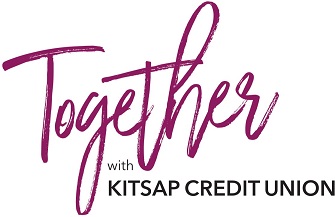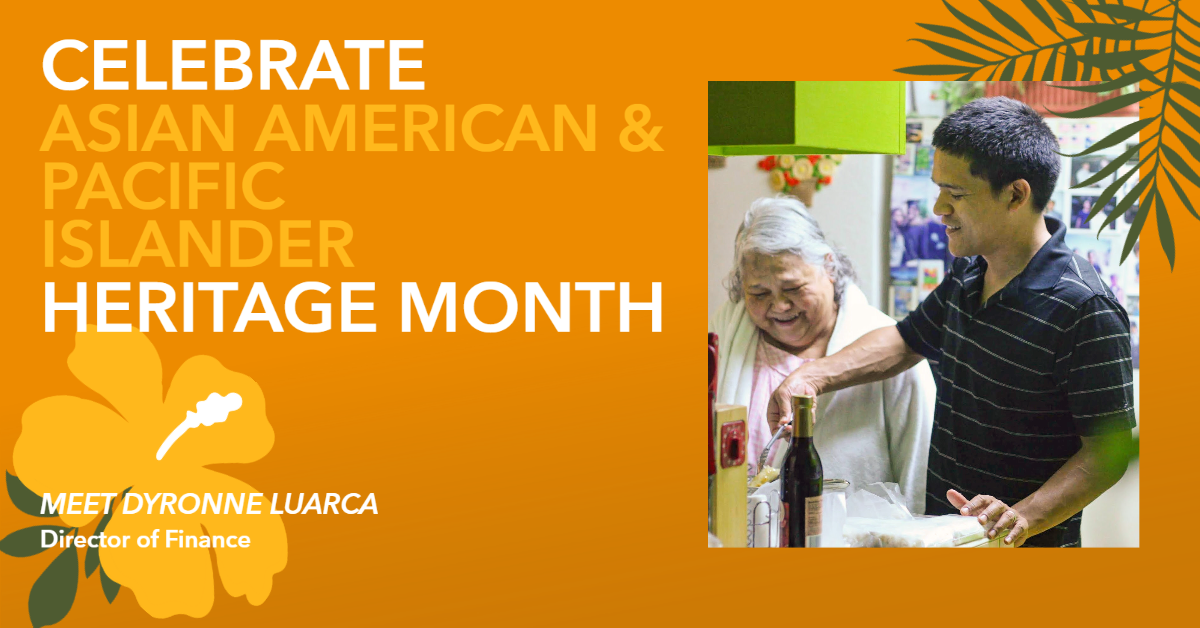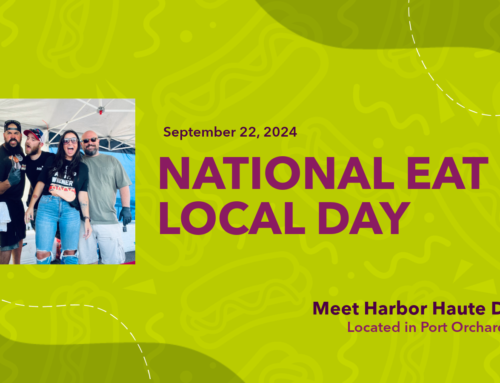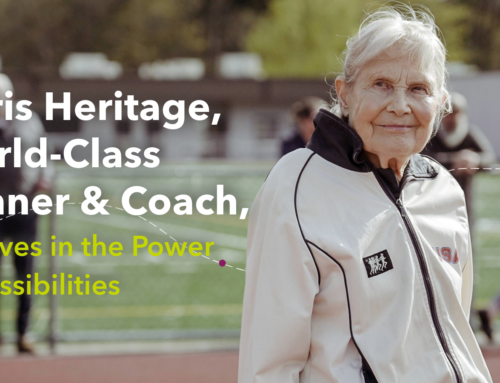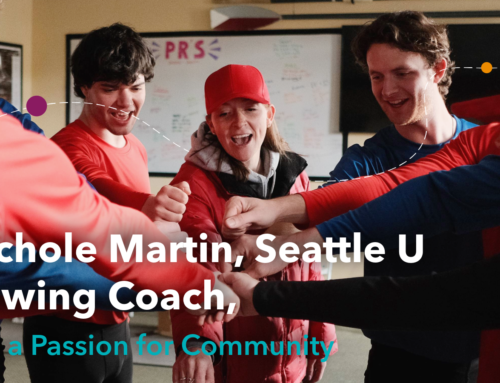In honor of Asian American Pacific Islander Heritage Month, we are happy to bring you the following interview with staff member Dyronne Luarca, Director of Finance. Interviews like these allow us not only to celebrate different cultures but also to learn more about our fellow teammates.
Before diving into Dyronne’s background, we wanted to share a fun fact. When speaking with Dyronne, we discovered that his very first banking experience was with our credit union at the ripe old age of 7. Little did he know on the day he accompanied his mother to a local branch, that his career path would lead him back to KCU. This story is an excellent example of how deep of a connection some of our staff have with KCU.
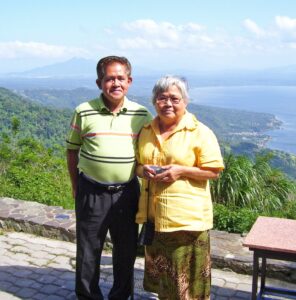
Mom and Dad in the Philippines.
Can you share how your family ended up in Kitsap County and how that ties into your cultural background?
Kitsap County has a significant Filipino American community. I believe it’s number three in the continental US percentage-wise. It’s driven by the influence of the Navy in this area and was the reason my parents settled here.
At one point, the Philippines was an American territory, and after the Philippines gained its independence, you could enlist in the US Navy even as a Filipino citizen. My father enlisted and ultimately settled in Bremerton, and my mother joined him while he was still finishing Boot Camp.
How was growing up in Bremerton as a Filipino?
What I loved about growing up here in Bremerton was that there was respect for the different ethnicities. There wasn’t one against the other. We each accepted the individual cultures and respected each other.
As a first-generation Filipino, what is the most noticeable difference between now and those who immigrated in the 60s and 70s like your parents?
At that time, the focus was assimilation versus cultural development: my parents and those who came to this country at that time assimilated into American culture and traditions. My parents kept up with some traditions, but the goal was to become more Americanized.
How did your parents trying to be more Americanized impact you?
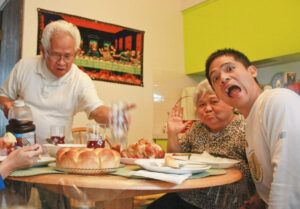
Dinner with Mom and Dad.
Since my family was assimilating, I would get comments from some of my Filipino community members. They would say I was not Filipino enough. So, there was a bit of segregation within our culture because of that.
Another example would be my school telling my parents to only speak English to me. The teachers said they did not want me to get confused and to concentrate on learning the English language. Unfortunately, because of this, I only know a few words in Tagalog.
Is Tagalog the official language of the Philippines?
Filipino is one of the two official languages of the Philippines, along with English. The Filipino language itself actually is not Tagalog but a standardized variety of it. There are over 7,000 islands that make up the Philippines and over 300 dialects, and Tagalog is the most spoken indigenous dialect.
Since the Philippines was a Spanish colony for over 300 years, there is a large Spanish influence in our traditions and language. Filipino is a mixture of Spanish, English, and Tagalog. Tagalog is more prevalent among older generations, while Filipino is commonly used among younger generations. Tagalog is the native dialect spoken and written in urban areas on the main island of Luzon, like Manila, where my family is from.
Even though they want to be more Americanized, did your family do anything to keep their culture alive here in the States?
My mother became a member of several Filipino organizations within the community. They had events, picnics, and parties. This was a great way to stay connected to like-minded people from her culture and to keep certain traditions alive.
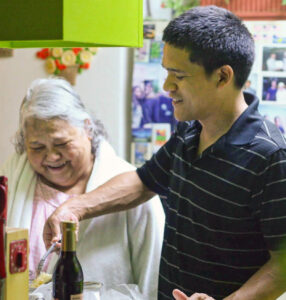
Cooking Lumpia.
Did your parents introduce you to any of your now favorite Filipino foods?
Yes, of course, they did. Interestingly, I don’t like a lot of the food from the Philippines. (Insert gasp from all Dyronne’s ancestors).
The cuisine is heavily pork and pork-fat based. But I do love lumpia. It is my favorite Filipino food and is essentially a Philippine eggroll. I learned how to make them from my mother, and I bring them to every party or dinner I am invited to. You can make a couple of versions, but my mom had her own unique recipe.
Sounds delicious. Can we get the recipe?
No! My mom always added a little special ingredient to make it her own, and I definitely can not share her secret.
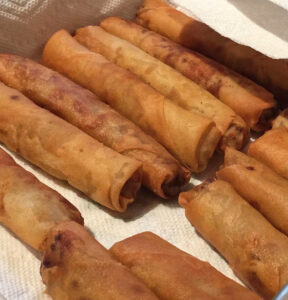
I made these.
What word best describes your parents?
Brave. They left everything, their families, their money, and their jobs. They came to a new place for the promise of opportunities and, especially for my parents, of acceptance.
My parents didn’t like to follow the rules, especially those set for them in the Philippines, which is why they left. One rule was that Philippine culture is a patriarchal one. My mother did not adhere to that part of the culture, and my mother, the matriarch of our family, influenced my house. An example is how my father didn’t care if I joined the Navy or not to follow in his footsteps. He wanted it to be up to me. However, my mother was in the background saying, “Do it.” When I became an officer, it was a prestigious honor for my mother to be able to share this about her son.
What do you mean they were looking for the promise of acceptance?
My parents said they never felt like they belonged in the Philippines, that they just did not fit in. When they came to the United States, they found a place where they did belong.
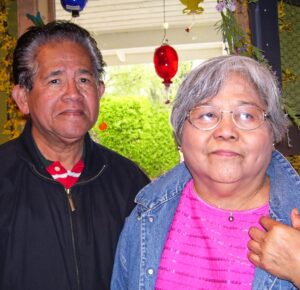
Mom and Dad.
Every culture has negativity, so take the best of your culture and evolve from there. That’s what my parents did for themselves and their family. They took the best from the Philippines, brought it to the States, and shared them with me. At the same time, they embraced the freedom to express their true selves and the feeling of belonging in this country.
What do you think the value of diversity is?
Diversity’s value is taking the best and negatives of your culture, lifting the strengths, and helping each other with the challenges. Then, pull the positives from the cultures that you’re surrounded by.
That’s the beautiful thing about diversity; you can take the values and the best from different cultures and connect them.
That’s what I hope for KCU, that through our DEIB efforts, we take the best of us and collectively create a unique KCU culture.
